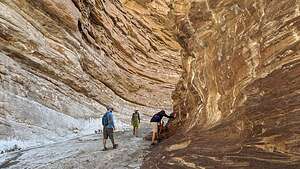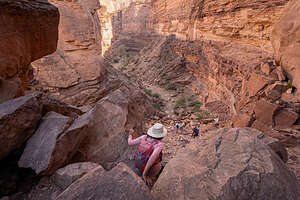- Home
- About
- Map
- Trips
- Bringing Boat West
- Migration West
- Solo Motorcycle Ride
- Final Family XC Trip
- Colorado Rockies
- Graduates' XC Trip
- Yosemite & Nevada
- Colorado & Utah
- Best of Utah
- Southern Loop
- Pacific Northwest
- Northern Loop
- Los Angeles to NYC
- East Coast Trips
- Martha's Vineyard
- 1 Week in Quebec
- Southeast Coast
- NH Backpacking
- Martha's Vineyard
- Canadian Maritimes
- Ocracoke Island
- Edisto Island
- First Landing '02
- Hunting Island '02
- Stowe in Winter
- Hunting Island '01
- Lake Placid
- Chesapeake
- Provincetown
- Hunting Island '00
- Acadia in Winter
- Boston Suburbs
- Niagara Falls
- First Landing '99
- Cape Hatteras
- West Coast Trips
- Burning Man
- Utah Off-Roading
- Maui
- Mojave 4WD Course
- Colorado River Rafting
- Bishop & Death Valley
- Kauai
- Yosemite Fall
- Utah Off-Road
- Lost Coast
- Yosemite Valley
- Arizona and New Mexico
- Pescadero & Capitola
- Bishop & Death Valley
- San Diego, Anza Borrego, Joshua Tree
- Carmel
- Death Valley in Fall
- Yosemite in the Fall
- Pacific Northwest
- Utah Off-Roading
- Southern CA Deserts
- Yosemite & Covid
- Lake Powell Covid
- Eastern Sierra & Covid
- Bishop & Death Valley
- Central & SE Oregon
- Mojave Road
- Eastern Sierra
- Trinity Alps
- Tuolumne Meadows
- Lake Powell Boating
- Eastern Sierra
- Yosemite Winter
- Hawaii
- 4WD Eastern Sierra
- 4WD Death Valley +
- Southern CA Deserts
- Christmas in Tahoe
- Yosemite & Pinnacles
- Totality
- Yosemite & Sierra
- Yosemite Christmas
- Yosemite, San Diego
- Yosemite & North CA
- Seattle to Sierra
- Southwest Deserts
- Yosemite & Sierra
- Pacific Northwest
- Yosemite & South CA
- Pacific Northwest
- Northern California
- Southern Alaska
- Vancouver Island
- International Trips
- Index
- Tips
- Books
- Photos/Videos
- Search
- Contact
Day 4 - Nankoweap Canyon (Mile 53) to Carbon Canyon (Mile 65), AZ
Friday, May 31, 2024 - 3:45pm by Lolo
12 miles and 3 hours from our last stop - 1 night stay
Travelogue
.thumbnail.jpg) Arriving at the ConfluenceToday I finally mustered the courage to ask Leonard if today would be a good day (meaning mild rapids) for Herb and I to join his paddle boat crew. He assured me it was. Okay, at least we would get a little exercise in while going down the river.
Arriving at the ConfluenceToday I finally mustered the courage to ask Leonard if today would be a good day (meaning mild rapids) for Herb and I to join his paddle boat crew. He assured me it was. Okay, at least we would get a little exercise in while going down the river.
The paddle boat consisted of 6 volunteer paddlers from our group and Leonard, our guide, who sat in the back sort of steering us and yelling out commands as to what we should to: “Right 2 forward,” meant the paddlers on the right side of the boat should take two strokes to move the boat forward. “Left 3 back,” meant the paddlers on the left side of the boat should take three strokes to move us in a backwards direction.
.thumbnail.jpg) Transition from emerald green to cobalt blueThe important thing was for all paddlers is to stay in sync. The two paddlers in the front (on the left and right side) set the pace and we all tried to stay in sync with the person in front of us. This meant I was pretty much looking at the paddle in front of me rather than the terrific view going by.
Transition from emerald green to cobalt blueThe important thing was for all paddlers is to stay in sync. The two paddlers in the front (on the left and right side) set the pace and we all tried to stay in sync with the person in front of us. This meant I was pretty much looking at the paddle in front of me rather than the terrific view going by.
I was shanghaied onto this slave ship under somewhat false pretenses as I did have to paddle through Kwagunt Rapid, which was a Grand Canyon 6. However, we did it in style, and I have to admit it was very fun and I was quite pleased with myself.
.thumbnail.jpg) Lovely Little Colorado River6 miles further down the river, at Mile 61.5, we came to the confluence with the Little Colorado River, the highlight of any raft trip down this river.
Lovely Little Colorado River6 miles further down the river, at Mile 61.5, we came to the confluence with the Little Colorado River, the highlight of any raft trip down this river.
Although the Navajo own the land along The Little Colorado River, the confluence of the Colorado and Little Colorado rivers holds deep spiritual meaning for many of the Native American tribes that live in the Grand Canyon region.
_1.thumbnail.jpg) The viewing standsFor the Hopi, life began near the confluence when their ancestors emerged from the underworld at the Sipapu, a landmark on the Little Colorado River.
The viewing standsFor the Hopi, life began near the confluence when their ancestors emerged from the underworld at the Sipapu, a landmark on the Little Colorado River.
The Hopi people also believe that their spirits live amongst the clouds above the Grand Canyon.You can easily see how a place so beautiful can take on spiritual qualities.
When not muddied with runoff, the waters of the Little Colorado River are a brilliant turquoise blue.
.thumbnail.jpg) LCR Conga LineWe were in luck today, as there had been no recent runoffs from rain to muddy it up, which would have made the water as brown as chocolate milk.
LCR Conga LineWe were in luck today, as there had been no recent runoffs from rain to muddy it up, which would have made the water as brown as chocolate milk.
At the confluence of the main Colorado River and the Little Colorado River, we could actually see the transition from an emerald green in the main river to bright cobalt blue in the Little Colorado. The temperature change is drastic as well as we moved from a chilly 50 degrees in the main Colorado River to the mid-70s in the Little Colorado.
.thumbnail.jpg) So much fun!!The electric blue color of the river was amazing. It is a result of the magnesium and calcium in the water, combining with the carbon dioxide in the air, creating calcium carbonate. This combination of minerals reflect the sunlight, creating, arguably, the most beautiful water in the world. The only other time we had seen water this color was at the Blue Lagoon in Iceland.
So much fun!!The electric blue color of the river was amazing. It is a result of the magnesium and calcium in the water, combining with the carbon dioxide in the air, creating calcium carbonate. This combination of minerals reflect the sunlight, creating, arguably, the most beautiful water in the world. The only other time we had seen water this color was at the Blue Lagoon in Iceland.
The calcium carbonate also creates a material called tufa, which forms a thin, spongy, white material coating the river bed.
.thumbnail.jpg) Short cut back to the raftsA harder, chalky limestone material called travertine settles out of the water and coats the rocks and boulders in a white hue, adding to the river’s color palette.
Short cut back to the raftsA harder, chalky limestone material called travertine settles out of the water and coats the rocks and boulders in a white hue, adding to the river’s color palette.
From the confluence, we walked about a quarter mile up along the bank of the Little Colorado to a natural water slide where we would spend a good part of the day acting like kids at a waterpark.
.thumbnail.jpg) Why walk when you can floatThere were even layers of limestone ledges alongside the river, which served as a great viewing platform to watch the action and get ready for another run down the slides.
Why walk when you can floatThere were even layers of limestone ledges alongside the river, which served as a great viewing platform to watch the action and get ready for another run down the slides.
We spent hours sliding down the soft, tufa-covered rocks through the warm cobalt blue rapids. Sometimes we slid down individually. Other times we formed conga lines and drifted down as a group.
.thumbnail.jpg) I hope I don't go through the ConfluenceWhen it was time to walk back along the ledges alongside the LCR, some of us walked and others (including me) took the shortcut of just floating on our backs to the confluence.
I hope I don't go through the ConfluenceWhen it was time to walk back along the ledges alongside the LCR, some of us walked and others (including me) took the shortcut of just floating on our backs to the confluence.
What a treat after the freezing cold water of the main Colorado River.
Herb took the boring way back by foot. I guess he wanted to keep his camera equipment dry.
.thumbnail.jpg) Herb took the boring way backOnce we got back to our boats and started heading further downriver, we left Marble Canyon behind us and entered the Grand Canyon for the first time on this trip.
Herb took the boring way backOnce we got back to our boats and started heading further downriver, we left Marble Canyon behind us and entered the Grand Canyon for the first time on this trip.
John Wesley Powell first made the distinction between the two canyons after his expeditions down the river in 1869 and 1871. After this point, the main canyon quickly becomes much deeper and foreboding as it begins to bend west.
As the river starts to cut deeper into the Kaibab Plateau, the gradient (drop) becomes steep as the river flows over harder rock, such as granite and schist.
 Slot canyon at Carbon CreekIt was a relatively short river day today (only 11.5 miles), since we had spent so much time joyfully playing in the Colorado River.
Slot canyon at Carbon CreekIt was a relatively short river day today (only 11.5 miles), since we had spent so much time joyfully playing in the Colorado River.
We stopped to camp at a lovely spot called Carbon Canyon. After setting up camp, we took a short hike (2.7 miles with a 614-foot elevation gain) up the canyon from the camping area up to a slot canyon with sculpted sandstone walls. There was a bit of rock scrambling to do as well.
 Rock scrambling in Carbon CanyonBack at camp, we were treated to a delicious steak dinner. I really have no idea where the guides were able to hide all this food.
Rock scrambling in Carbon CanyonBack at camp, we were treated to a delicious steak dinner. I really have no idea where the guides were able to hide all this food.
Oh, and that evening I got my first red fire ant bite, which definitely wasn’t pleasant. Several of us had gotten them already and described the numbness that moves up your leg. Great. I didn’t get that though. Maybe it was because Daniel, one of our river guides, gave me his secret antidote - a nicotine patch - not to chew but to place directly on the sting. I think it really helped because I didn’t experience the numbness others were describing.
What a day it had been!!
- ‹ previous
- 5 of 14
- next ›
Day 4 - Nankoweap Canyon (Mile 53) to Carbon Canyon (Mile 65) location map in "high definition"
Javascript is required to view this map.
